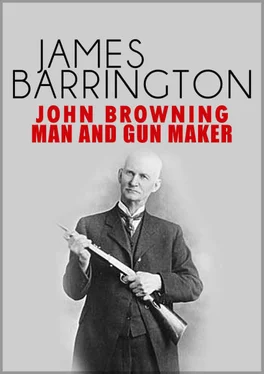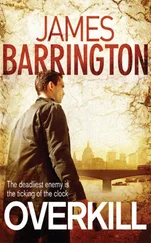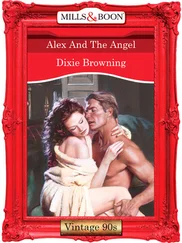James Barrington
JOHN BROWNING
Man and Gunmaker
In any survey of the history of firearms development, it will quickly become apparent that the inventive genius of one man advanced the state of the art at a totally unprecedented and unsurpassed rate. Nobody, before or since, has had a greater — or even anything approaching an equal — influence on the development of firearms. He was the author of 128 separate patents covering virtually all types of weapon from pistols upwards, and was unique in that his designs constituted virtually the entire output of three major American arms manufacturers in the first half of the last century, and have spawned countless imitations all over the world.
His name was John Moses Browning, whose name is probably most closely linked with the automatic pistols still produced in Belgium by Fabrique Nationale: in fact, in France the name ‘Browning’ has passed into the language and is used as a proper noun and a synonym for a pistol. But Browning was not just a designer of handguns. He also profoundly influenced the development of machine-guns, rifles and shotguns, and it is a measure of the enduring popularity of his designs that so many weapons covered by Browning patents are still manufactured today.
This short book attempts to paint a picture of Browning the man, as well as describe his outstanding achievements in his chosen field. In fact, it could be said that John Browning didn’t choose to become a gunsmith. You could argue that his upbringing and his family, and to some extent his surroundings, chose his profession for him. And it really all started with his father.
2. JONATHAN BROWNING — THE FATHER
John Browning was the son of Jonathan Browning, a Mormon who had been part of the great Mormon Exodus from Nauvoo, Illinois, to Utah in 1852. Jonathan had been born in 1805, and had trained at an early age as an apprentice gunsmith by the unusual device of simply arriving on the doorstep of a Nashville gunmaker named Samuel Porter and offering to work for him for nothing in exchange for lessons in gun barrel-making. Porter was so impressed with Jonathan’s work that he soon started paying him a wage of two dollars a week, in addition to providing bed and board, and when, after three months, Jonathan announced that he was returning to the Browning home at Brushy Fork, Tennessee, he offered him a share of the business if he would agree to stay.
No doubt Jonathan was tempted, but remained adamant. The two men parted as firm friends, Porter supplying Jonathan with rifling and boring tools as well as a selection of mandrels — used for hand-forging gun barrels — of different sizes. Also included in his pack was a rifle made by Porter but carrying a barrel made entirely by Jonathan, and on which the older man had stamped ‘JONATHAN BROWNING 1824’.
From this small and inauspicious beginning, Jonathan Browning established himself as a competent rural gunmaker, repairing damaged weapons and producing rifles to order, but his aspirations were higher. Following marriage and a family move from Brushy Fork to Quincy, Illinois, in 1834, he concentrated his considerable abilities on the problem of designing a simple but efficient repeating rifle.
The problem he had was that in those days the propellant was black powder and the ignition source a percussion cap. To load a rifle, a suitable measure of black powder was poured down the barrel from the muzzle, usually from a powder flask, to be followed by a small piece of wadding or other material. Then the ball would follow, which would be rammed firmly into place to compress the powder charge. A percussion cap would be placed on the nipple below the hammer, and the weapon was then ready to fire. When the trigger was pulled, the falling hammer struck the percussion cap, which fired a spark down a tube and into the barrel, igniting the black powder and driving the ball down the barrel.
Each barrel of a rifle was a single-shot weapon, and the only way a hunter could have a second shot immediately available was either to have a second weapon to hand, or use a double- or multiple-barrelled rifle, and it was that problem which Jonathan Browning set out to solve. What he did was to approach the problem using lateral thinking. Instead of adding another barrel, he decided to cut off the breech end of the barrel and then designed a kind of multi-chamber breech block.
His endeavour succeeded, and the result was one of the simplest practical repeating weapons ever produced. Known as a Slide Gun, a Slide Repeating Rifle, or sometimes a Harmonica Rifle, its five-shot magazine was fabricated from a solid rectangular bar, each chamber having an integral nipple, and was passed through the breech from side to side. The magazine was moved on after each shot by a thumb-operated lever,which also forced the chamber forward into a gas-tight alignment with the barrel, while the hammer was positioned below the breech in front of the trigger guard. Larger capacity magazines, with capacities of 10 or 25 shots, were available to special order from Jonathan, and each rifle was supplied with at least one spare magazine, thus giving the owner a minimum of ten rapid shots if required.
Crude though this may sound, the weapon was capable of sustained fire at a rate unequalled by any other weapon of the time, and as recently as 1952 an example of the weapon held in the Browning Family Collection was used to fire fifteen rounds without malfunction.
In fact, Jonathan also invented a second type of repeating rifle at about the same time. This was a cylinder repeating rifle, similar in concept to the mechanism of a single-action revolver.
The slide rifle which, like the cylinder repeater, was not patented by Jonathan Browning, was an immediate success in the area, producing far more orders than he could possibly fill, and would no doubt have become a much more popular weapon had Browning’s manufacturing capacity been equal to his design ability.
It’s worthwhile contrasting this weapon, essentially knocked together by a self-taught gunsmith in a blacksmith’s shop, with the Colt Revolving Rifle, produced in 1855 by this fully-equipped and experienced manufacturer of firearms. The Colt weapon was a failure, because its design didn’t address the problem which Jonathan Browning’s prodigious talent had solved: the Colt couldn’t maintain a gas-tight seal between the barrel and the chamber, which led to misfires, gas leakage and indifferent performance.
In 1840 Jonathan Browning, by then an established member of the community and a good friend of the young Abraham Lincoln, became deeply interested in religion and, in particular, the teachings of the Mormon Church. The direct result of this interest was the Browning family’s move, in 1842, to the city of Nauvoo, Illinois, which was being constructed on the instructions of Joseph Smith, the founder and Prophet of the Church of Jesus Christ of Latter-Day Saints.
The Mormons were not popular in the area, being subjected to frequent attacks by armed Illinois and Missouri gangs, and the violence reached a peak in June 1844 when Joseph Smith and his brother, Hyrum, were assassinated at Carthage, Illinois. This action was the spur that led to the great Mormon Exodus under Brigham Young, which started in 1846 and continued for some years. Though Jonathan Browning was eager to head west with the pioneers, Young recognized his worth and insisted that he stay to provide the weapons so desperately needed by the Saints, and it wasn’t until 1852 that Jonathan was permitted to follow the trail from Nauvoo that led eventually through the Rocky Mountains to Utah and Ogden in the valley of the Great Salt Lake.
The violence at Nauvoo and the long trek west had left their mark on Jonathan Browning, and he never again applied himself to the development of new weapons, contenting himself with repairing and refurbishing not only guns but any kind of mechanical contraption which required attention. The Browning gunsmith building in Nauvoo is now a museum open to the public.
Читать дальше












